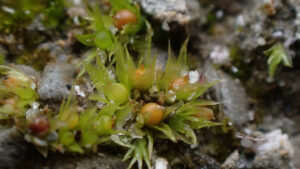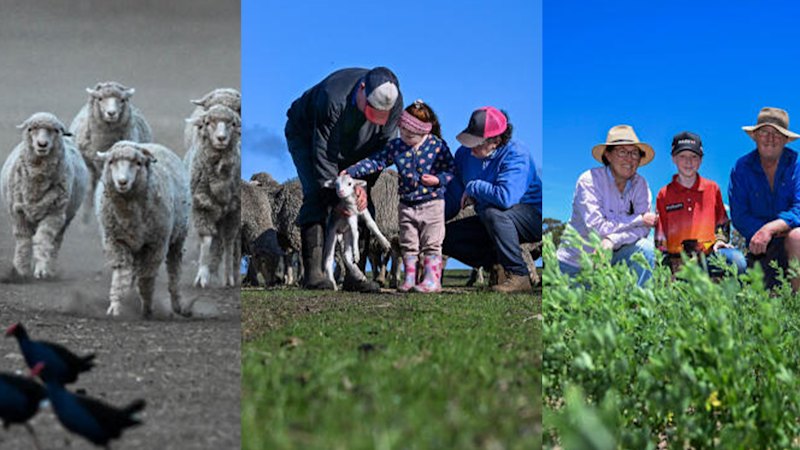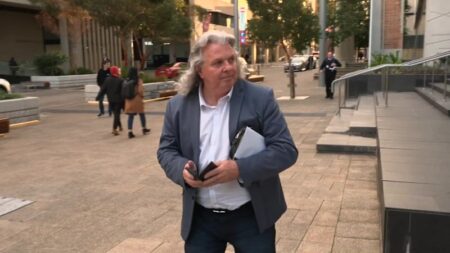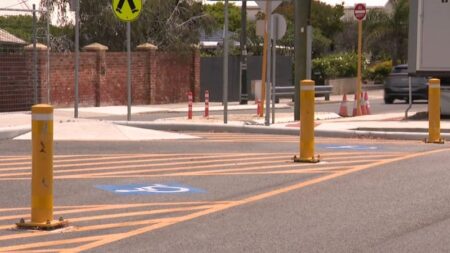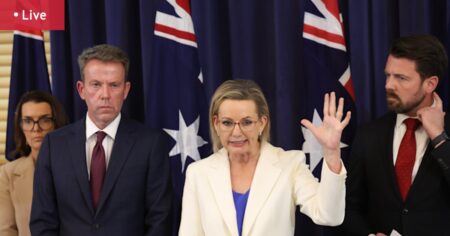So far, the Greens have received roughly two-thirds of the average rainfall for this year. But often they received half the rain they were expecting.
“So it feels like you battle for every single drop of rain. But at least it meant we got hay,” Stuart Green said.
While many of the Greens’ paddocks have begun drying off, they are still providing plentiful feed for the animals and one paddock of lucerne is lush, vibrant and promising. Dozens of tightly rolled hay bales now provide a sort of insurance against further rain deficiencies.
The Greens’ farm in May, when the drought was hitting hard. Credit: Joe Armao
Rather than selling off their flock en masse, the Greens held on through the spring, allowing them to raise the lambs that were born when the drought was biting the hardest.
Green said his sheep were putting on weight and he was no longer completely reliant on buying in feed for lack of pasture in their paddocks.
“We don’t have to go out in the dusty ute and hook up the feed cart and feed them. They’re going along alright.”
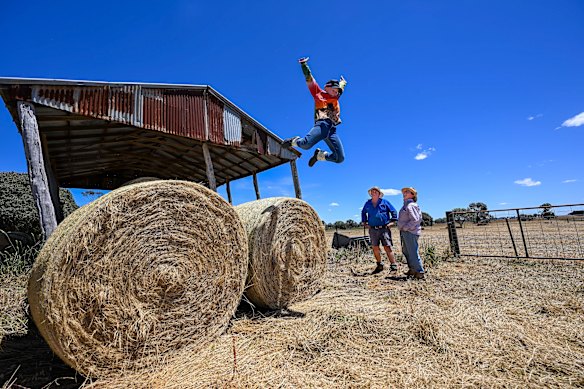
Henry Green enjoying the newly harvested hay bales. Credit: Joe Armao
Victoria’s south-west was among the hardest-hit areas by drought. But the south-western town of Colac had just over 73 millimetres of rain, compared to the average of almost 53 millimetres in October, according to Bureau of Meteorology figures. By comparison, Mount Baw Baw was exceptionally wet, with almost 236 millimetres in October against an average of 155 millimetres.
But some areas are still struggling, including Rutherglen in the state’s far north-east, where the 22 millimetres of rain was well below the average of just under 60 millimetres for October.
Soaring sheep prices have also given farmers cause for cautious optimism. Meat and Livestock Australia market information manager Stephen Bignell said a shrinking sheep flock throughout Australia and global protein shortages had helped drive up domestic lamb prices for producers.
He said “trade lambs”, which are lambs typically sold to supermarkets, were fetching about $11.50 a kilogram, compared to just over $8 last year. The prices were helping boost the confidence of Victorian farmers, Bignell added.
“Sentiment is higher than we would expect in southern Australia, which is drought affected,” he said.
Now farmers are preparing for a sweltering summer, with the Bureau of Meteorology’s long-range forecasts indicating much of Victoria can expect hotter-than-average temperatures throughout the warmer months.
Monash University climate scientist Ailie Gallant said hotter summers were becoming the norm thanks to climate change.
Loading
“I can certainly say nearly every summer and every month is hotter than average these days. Climate change makes sure of that,” Gallant said.
However, she said the long-range forecasts only provided a general indication of weather to come and were subject to change. Gallant said the long-term outlook for rain was normal, making it difficult to determine whether the drought was truly over or the recent rain was a “blip” on the calendar.
In south-west Victoria, dairy farmer Matt Reid said while the rain had brought enormous relief, many farmers had exhausted all their fodder supplies over the past year or so.
The drought had also threatened community sport in the region. Reid, who is the immediate past vice-president of the Western Eagles in Irrewillipe, said the club had been forced to postpone the start of its season this year because the ground was so dry. But by the finals the surface had dramatically improved after steady rain.
“By the end of the season the ground looked fantastic,” Reid said.
Many farmers know it is too soon to celebrate despite the welcome arrival of plentiful rain in many Victorian locations. But at least their grass is greener on this side of the drought.
Get to the heart of what’s happening with climate change and the environment. Sign up for our fortnightly Environment newsletter.
Read the full article here


